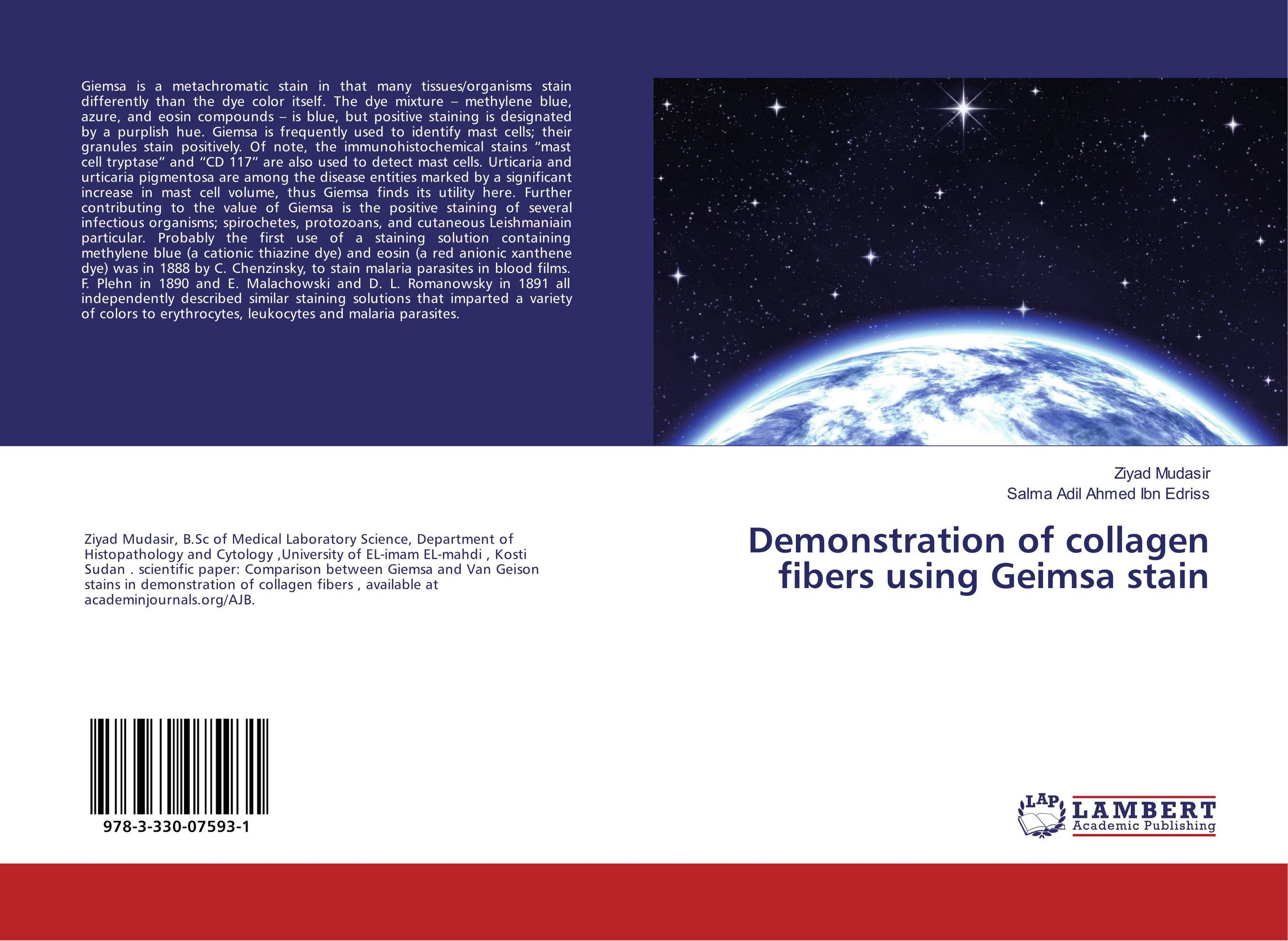| Поиск по каталогу |
|
(строгое соответствие)
|
- Профессиональная
- Научно-популярная
- Художественная
- Публицистика
- Детская
- Искусство
- Хобби, семья, дом
- Спорт
- Путеводители
- Блокноты, тетради, открытки
Demonstration of collagen fibers using Geimsa stain.

В наличии
| Местонахождение: Алматы | Состояние экземпляра: новый |

Бумажная
версия
версия
Автор: Ziyad Mudasir and Salma Adil Ahmed Ibn Edriss
ISBN: 9783330075931
Год издания: 2017
Формат книги: 60×90/16 (145×215 мм)
Количество страниц: 76
Издательство: LAP LAMBERT Academic Publishing
Цена: 21841 тг
Положить в корзину
Позиции в рубрикаторе
Сферы деятельности:Код товара: 171993
| Способы доставки в город Алматы * комплектация (срок до отгрузки) не более 2 рабочих дней |
| Самовывоз из города Алматы (пункты самовывоза партнёра CDEK) |
| Курьерская доставка CDEK из города Москва |
| Доставка Почтой России из города Москва |
Аннотация: Giemsa is a metachromatic stain in that many tissues/organisms stain differently than the dye color itself. The dye mixture – methylene blue, azure, and eosin compounds – is blue, but positive staining is designated by a purplish hue. Giemsa is frequently used to identify mast cells; their granules stain positively. Of note, the immunohistochemical stains “mast cell tryptase” and “CD 117” are also used to detect mast cells. Urticaria and urticaria pigmentosa are among the disease entities marked by a significant increase in mast cell volume, thus Giemsa finds its utility here. Further contributing to the value of Giemsa is the positive staining of several infectious organisms; spirochetes, protozoans, and cutaneous Leishmaniain particular. Probably the first use of a staining solution containing methylene blue (a cationic thiazine dye) and eosin (a red anionic xanthene dye) was in 1888 by C. Chenzinsky, to stain malaria parasites in blood films. F. Plehn in 1890 and E. Malachowski and D. L. Romanowsky in 1891 all independently described similar staining solutions that imparted a variety of colors to erythrocytes, leukocytes and malaria parasites.
Ключевые слова: collagen, Geimsa, mast cells



